#ca. 1779
Text
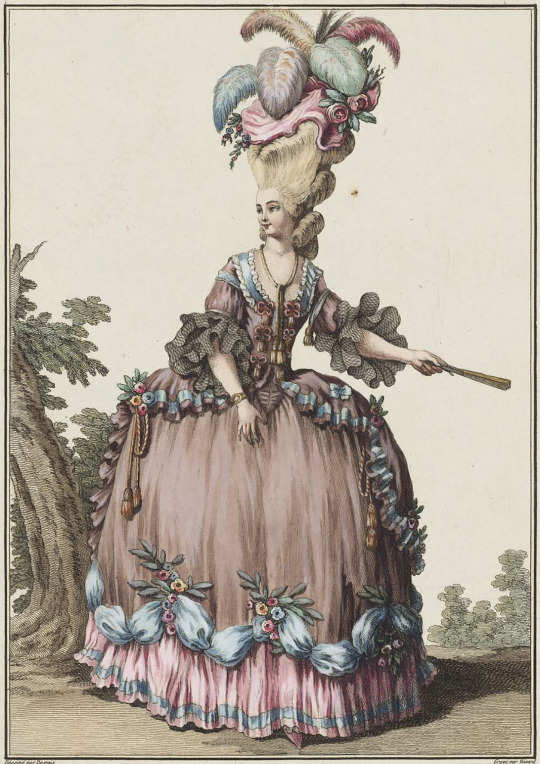
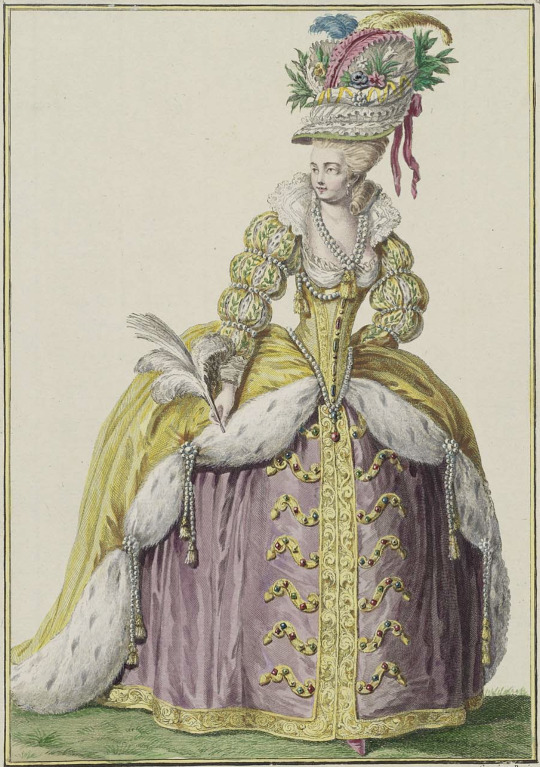
#historical fashion polls#fashion plate#fashion poll#historical dress#historical fashion#dress history#fashion history#18th century costume#late 18th century#18th century fashion#18th century#late 1700s#circa 1780#1770s
45 notes
·
View notes
Text
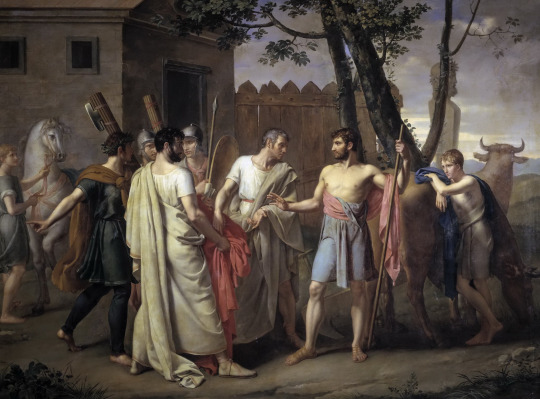
Juan Antonio Ribera y Fernández (Spanish, 1779-1860)
Cincinnatus abandons the Plough to dictate Laws to Rome, ca.1806
Museo Nacional del Prado
The hero of Republican Rome, Lucius Quinctius Cinncinatus had abandoned public life and retired to farm work. This painting depicts the moment when various representatives of the Senate offer to name him dictator. Ribera chooses the exact moment when the senators hand the purple robes, symbolizing power, to Cincinnatus, who has just stopped plowing.
#Juan Antonio Ribera y Fernández#neoclassical#european history#lucius quinctius cinncinatus#roman#southern europe#mediterranean#art#fine art#european art#classical art#europe#european#oil painting#fine arts#europa#spanish#hispanic#latin#1800s
32 notes
·
View notes
Text
@nympheline asked: what sort of love tokens did sailors wear, please?
Well, we all know the little things that Sailor made for her loved ones at sea or bought and gave to her before they set sail. Be it coins, shell pictures, scrimshaws, woolies, portraits etc. But what did the wives, fiancées, but also mothers and sisters give the men (assuming they went voluntarily, because the pressed ones often had no opportunity to say goodbye or even exchange small gifts)? Mostly the women gave their husbands something useful. Especially when it concerned the working class, it was simple things like wool socks, hats, a waistcoat or a pin cushion or a whole housewife (sewing kit).

Housewife, c. 1810 (x)
But foodstuffs such as sweets or tobacco were also very popular.

Waistcoat of Tahiti cloth (tapa) for Captain Cook to wear at court, had he returned from his third voyage, ca. 1779 / embroidered by Mrs Cook (x)
Members of the upper classes or the nobility, of course, had completely different means at their disposal. And there were portraits, tobacco boxes, pipes, wines, food, but also embroidered handkerchiefs, books and letters as examples.
Well, i hope it helps you a bit, and as soon as i have more pictures, i will elaborate further.
75 notes
·
View notes
Photo

Carolus Linneaus. ca. 1779. Credit line: Gift of Frederick Rathbone, 1910 https://www.metmuseum.org/art/collection/search/191601
#aesthetic#art#abstract art#art museum#art history#The Metropolitan Museum of Art#museum#museum photography#museum aesthetic#dark academia
10 notes
·
View notes
Photo
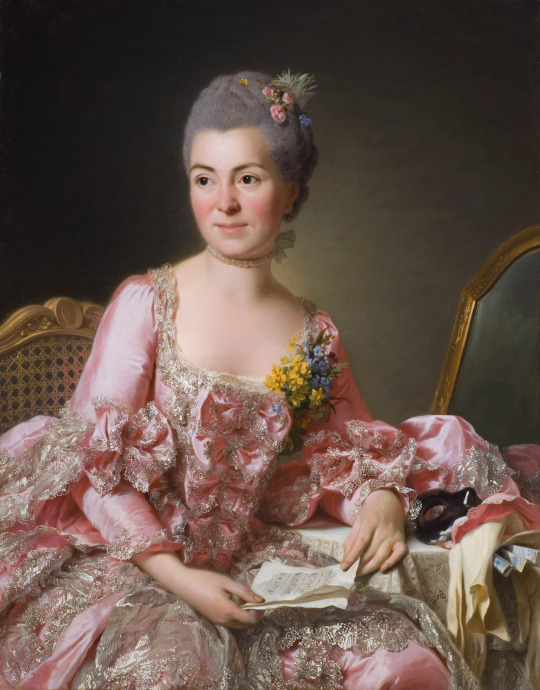
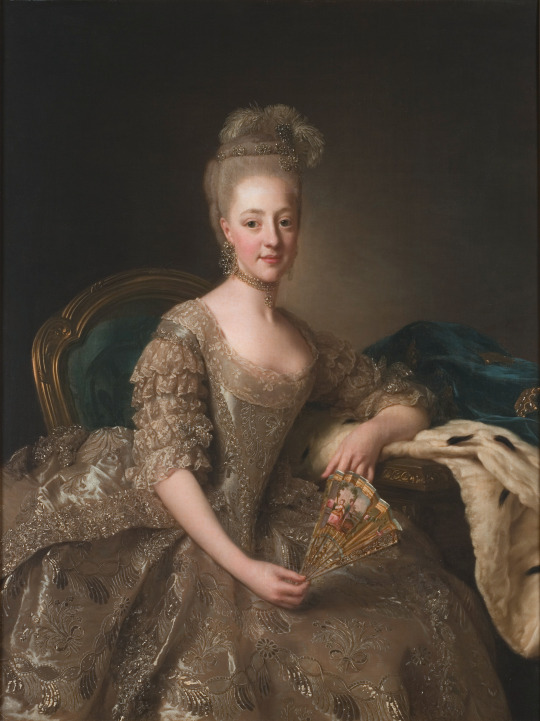
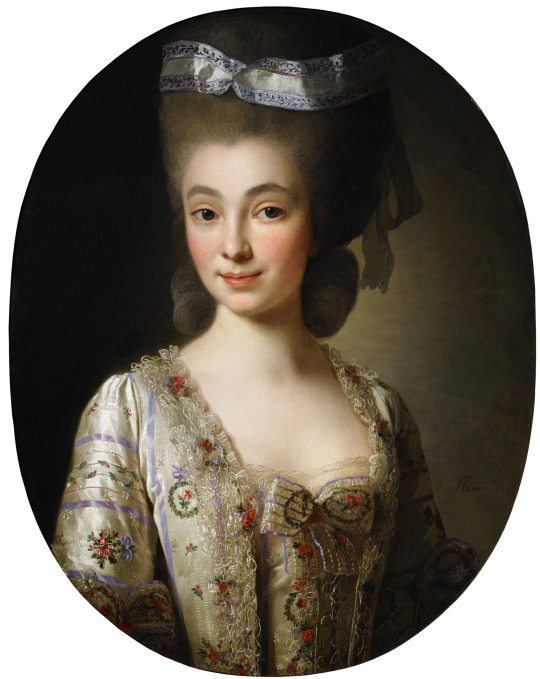
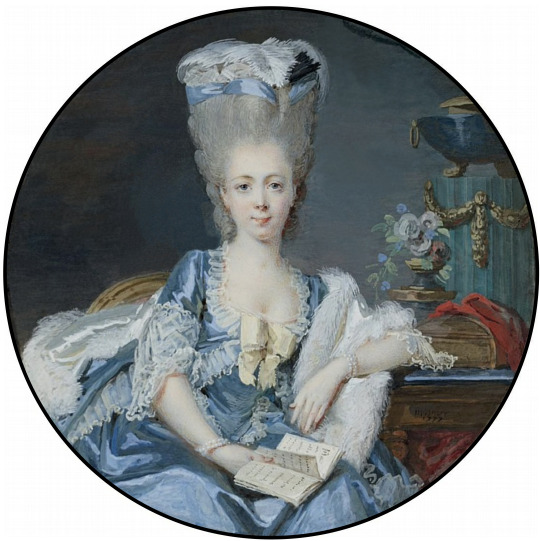
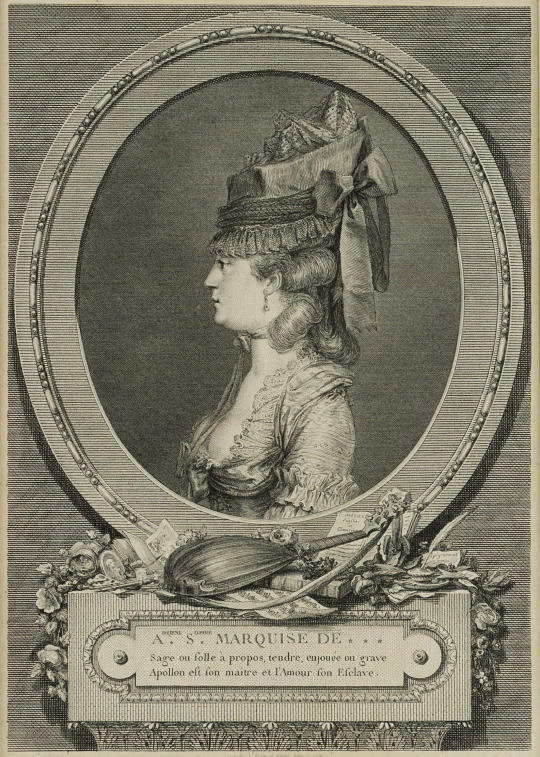
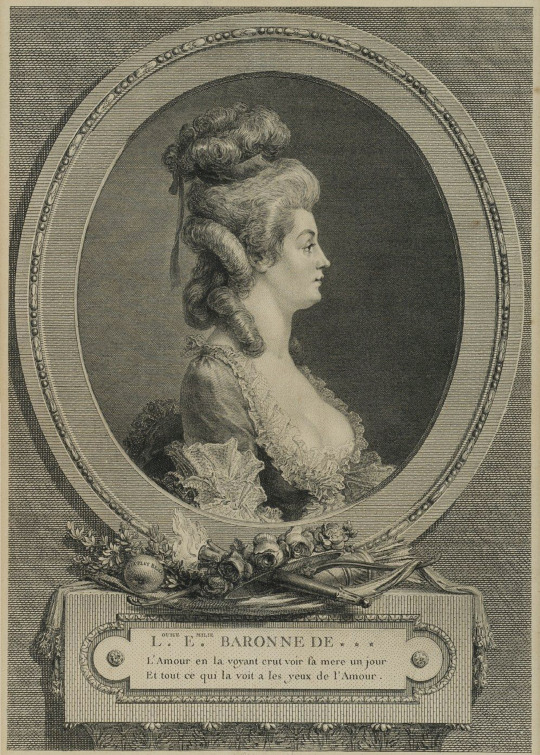
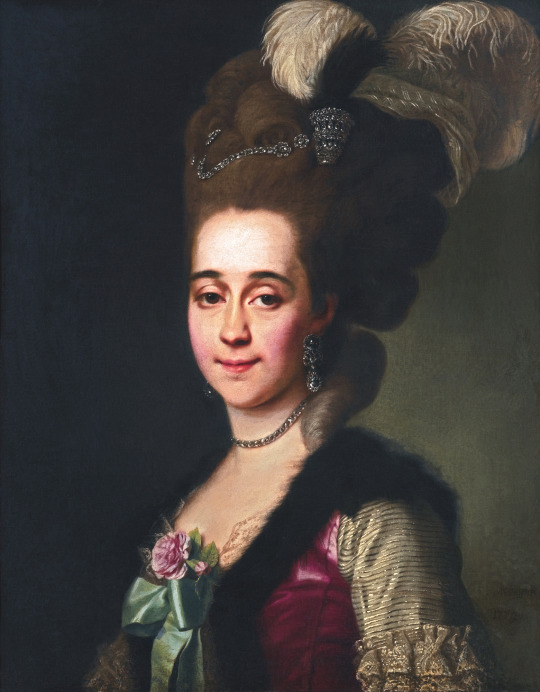


1770s dress -
Top 1770 Marie-Suzanne Giroust (1734-1772), wife of Alexander Roslin by Alexander Roslin (location ?). From tumblr.com/lenkaastrelenkaa 2048X2616.
Second row 1774 Hedvig Elisabeth Charlotta by Alexander Roslin (Nationalmuseum - Stockholm, Sweden). From Wikimedia.
Third row left 1770s Lady by Alexander Roslin (location ?). From tumblr.com/silverfoxstole; fixes spots & some cracks w Pshop 2048X2576.
Third row right 1777 Jeune femme de qualite by Jean Laurent Mosnier (auctioned by Christie's). From invaluable.com-auction-lot-jean-laurent-mosnier-paris-1743-1744-1808-saint-p-67-c-9e67941402 3157X3164. An early appearance for a zone bodice.
Fourth row left 1779 Adrienne Sophie, Marquise de Montesson by A. St. Aubin. From invaluable.com 2531X3548.
Fourth row right 1779 Louise Emilie, Baroness of Andlau by A. Saint-Aubin. From invalueable.com 22528X3536.
Fifth row 1779 Varvara Golytsyna by Dmitry Grigoryevich Levitsky (auctioned by Sotheby's). From Wikimedia; exposure +15% contrast -20% 1561X2000.
Sixth row ca. 1775 Duc de Choiseul, his mistress, the Comtesse de Brionne and the Abbé Barthélmy (Getty Museum - Los Angeles, California, USA). From the Google Art Project; increased exposure 981X782.
Seventh row Antonio Ghidini and his family by Pietro Melchiorre Ferrari (Labirinto della Masone - ). From tumblr.com/history-of-fashion 2048X2833.
#1770s fashion#Louis XV fashion#LouisXVI fashion#Georgian fashion#straight hair#bows en echelle#Alexander Roslin#hair jewelry#hair feathers#high coiffure#large curl coiffure#hair ribbon#A. St. Aubin#hat#Dmitry Grigoryevich Levitsky#fur trimming#Pietro Melchiorre Ferrari#floral headdress
24 notes
·
View notes
Text

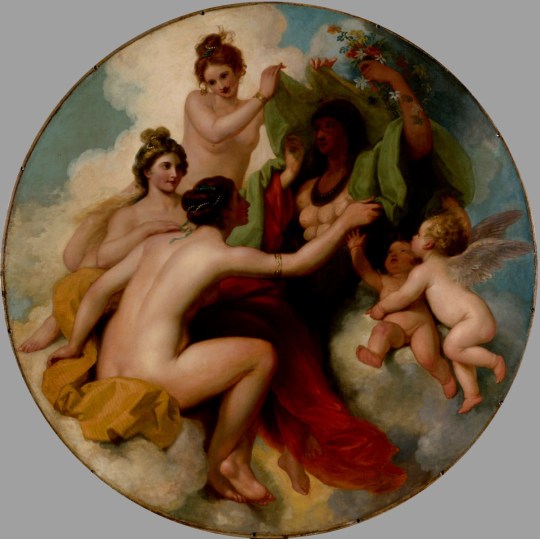




▪︎ Fire, Water, Air, Earth, The Graces unveiling Nature.
Artist/designer Studio of Benjamin West (1738-1820)
Date : ca. 1779
Medium : Oil on canvas
#18th century#18th century art#18th century painting#history of art#art#history#decorative arts#art history#four elements#fire#water#air#earth#Benjamin West#three graces#nature#1779
140 notes
·
View notes
Photo




Manjuvara and Prajnaparamita
A Gilt Copper Alloy Figure of Manjuvara and Prajnaparamita Nepal, Dated 1779 CE
The bronze's inscription, translates to: "May it be good: The third of the bright half of Phalgun, in the year 899 (ca. February 1779 CE)
Identified by the sword and manuscript he brandishes in his primary hands, Manjuvara is a three-headed and six-armed tantric form of Manjushri. Seated in royal ease (lalitasana), he is joined in blissful union by his diminutive female consort, Prajnaparamita, who embodies the sutra of the same name. Here, she comfortably mirrors her consort's seated pose as she pinches the stem of a blue lily in the gesture of teaching (vitarka-mudra).
(via Bonhams)
90 notes
·
View notes
Text

Sir Joshua Reynolds, Jane Fleming, later Countess Harrington, ca. 1778-1779, oil/canvas (The Huntington Library, San Marino)
20 notes
·
View notes
Note
I’ve said as much on Twitter too - but it’s not meant to be a hijab. This piece is from a YSL collection that is inspired by Martha Graham, a historic feminist figure from dance.
I think O is highly problematic - and the designer probably didn’t fully think through the implication that it could be interpreted as a hijab. But I think this assumptions is dangerous bc it can make fans get painted as anti-feminist/mob-like and dismiss our valid points about O being problematic.
YSL collection: https://www.vogue.co.uk/fashion/gallery/saint-laurent-ss23
About Martha Graham: https://www.latimes.com/archives/la-xpm-1991-04-03-ca-1779-story.html
I appreciate the explanation but like I've said, this isn't my place to defend. I asked those who wear hijabs and those where hijabs are part of their culture/religion. When they said it was offensive, that was all I needed. So I won't defend it. And this isn't dismissing our valid points about her. I go out of my way to make sure we only discuss valid points
YSL collection
Martha Graham
7 notes
·
View notes
Text


#historical fashion polls#fashion plate#fashion poll#historical dress#historical fashion#dress history#fashion history#18th century costume#late 18th century#18th century fashion#18th century#1770s#late 1700s#circa 1780
37 notes
·
View notes
Text

Juan Antonio Ribera y Fernández (Spanish, 1779-1860)
Wamba renouncing the Crown, ca.1819
Museo Nacional del Prado
An elderly Wamba rejects the crown that the Visigoth nobles offer him with a wave of his hand, but one of them threatens to kill him if he does not accept it.
#Juan Antonio Ribera y Fernández#spanish#neoclassical#spanish art#visigoth#wamba#european history#juan antonio ribera y fernandez#european art#hispanic#latin#art#fine art#classical art#europe#european#oil painting#fine arts#europa#mediterranean#1700s#germanic tribes#germanic tribe#wamba renouncing the crown#1800s
25 notes
·
View notes
Text
The death of Captain Cook- 14th Febuary 1779
When Captain James Cook came to the Hawaiian Islands in 1779 during his third voyage around the world, he had no idea what nasty consequences this would have for him.
At first, everything went as planned. The Hawaiians got on well with the Europeans and presumably (this circumstance has long been disputed and should therefore be regarded with caution) even thought Cook was the return of a seasonally revered deity, Lono, because his arrival coincided with the corresponding time at which this supernatural being was supposed to arrive.
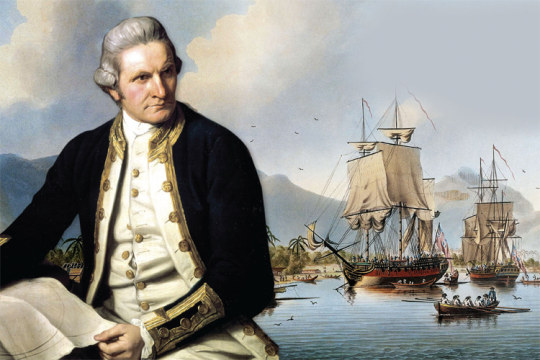
(x)
As Cook left two days later, on 4 February 1779, all was initially quiet. However, when he returned on 11 February to replace a Resolution mast that had been damaged in the storm, relations were testy, for the Hawaiians were puzzled by the totally unexpected return of their god, whose season had now expired. They became suspicious and quarrels between the natives and the whites became more frequent. To put it politely, they behaved like elephants in a china shop. They disregarded the customs and habits of their hosts and even buried a Sailor in a place only allowed for chiefs.
When islanders stole the Resolution's large boat to punish their invaders by taking something valuable from them. Cook captured the local king Kalaniʻōpuʻu as a hostage for its return - something he had, by the way, successfully done many times before on his voyages to get what he wanted. However, considerable unrest ensued because the king refused to comply with his transfer to the ship.
When Cook and a few companions came ashore in a small boat, the confrontation escalated. This included the firing of rifle shots and his men trying to get back into the boat and thus to safety. Whether Cook was then killed from behind or stabbed to death because he turned towards the boat and shouted to his men not to shoot is not clear. In any case, he is said to have fallen forward into the shallow water, while the rest of the small crew remaining in the dinghy tried to escape from the danger zone together with their boat without giving their captain any help.
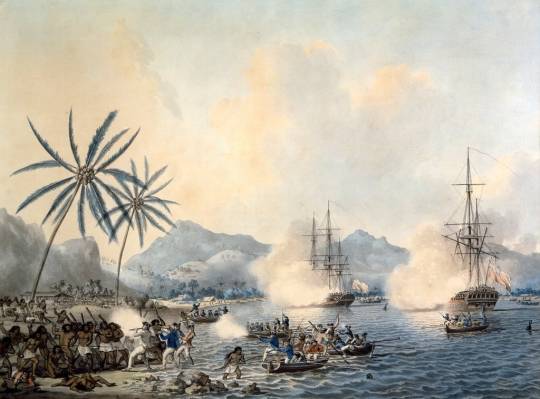
The Death of Cook, John Cleveley the Younger, 1784 (x)
Thus James Cook, as well as four marines and some Hawaiians, died on 14 February 1779.

Account of Cook’s death written by midshipman Trevenen who was present in Resolution‘s cutter literally only metres away from Cook when he was killed in Carricacoolah Bay, Hawaii, on 14th February 1779. Likely written on board Resolution (x)
After the incident, Captain Charles Clerke took command of the expedition and the Resolution, handing the Discovery over to Lieutenant John Gore. Clerke was wise enough to refrain from reprisals and, through the mediation of the priest and a son of the king, was at least handed over some of Cook's body parts and those of the maritime soldiers, which lasted until 20 February, as his body was dismembered and distributed to several higher-ranking natives, which was not uncommon among the inhabitants of Polynesian space at the time. As a rule, the fragments of respected enemies and chiefs were even given a certain veneration. Cook was identified by a burn on his right hand that had occurred years earlier in New Zealand. A burial at sea was held for him in the bay on 21 February.

Captain James Cook mourning ring, owned by Elizabeth Cook, ca. 1780 (x)
The next day, the ships departed for home. News of Cook's death reached England by land six months before the ships returned home. His successor tried to continue the mission, but failed at 70° 33' N due to the pack ice, which seemed even stronger than the previous year. On the return voyage to Petropavlovsk, Captain Clerke died at the age of 38. Virginia-born Lieutenant Gore, who had already taken part in Cook's first Pacific voyage, led the expedition back to England, where it arrived on 6 October 1780.
66 notes
·
View notes
Photo

Fan. ca. 1779. Credit line: Gift of Mrs. William Randolph Hearst, 1963 https://www.metmuseum.org/art/collection/search/209867
#aesthetic#art#abstract art#art museum#art history#The Metropolitan Museum of Art#museum#museum photography#museum aesthetic#dark academia
8 notes
·
View notes
Text
0 notes
Text
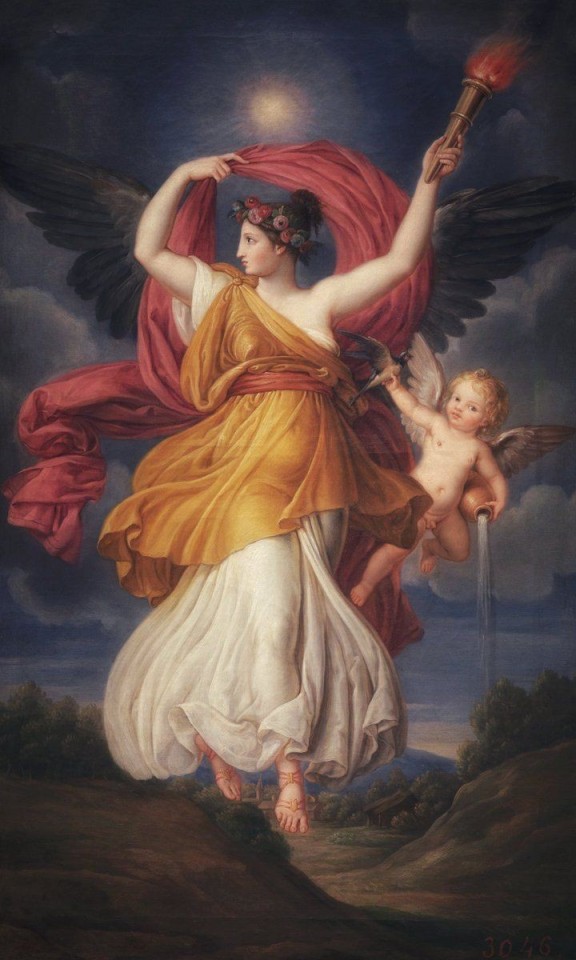
Allegory of the Dawn, ca. 1819
Juan Antonio Rlbera, 1779-1860
Museo Nacional del Prado, Madrid, Spain
1 note
·
View note